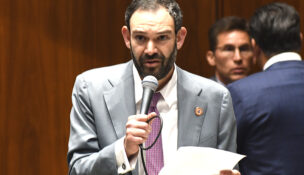Report: Pinal County smack in middle of ‘Arizona Sun Corridor’
Arizona Capitol Reports Staff//July 27, 2007//[read_meter]
Report: Pinal County smack in middle of ‘Arizona Sun Corridor’
Arizona Capitol Reports Staff//July 27, 2007//[read_meter]
The Morrison Institute study was commissioned by the Pinal County Board of Supervisors. The result is a 47-page report, called “Future at Pinal,” which traces the history of the county...
No tags for this post.

















